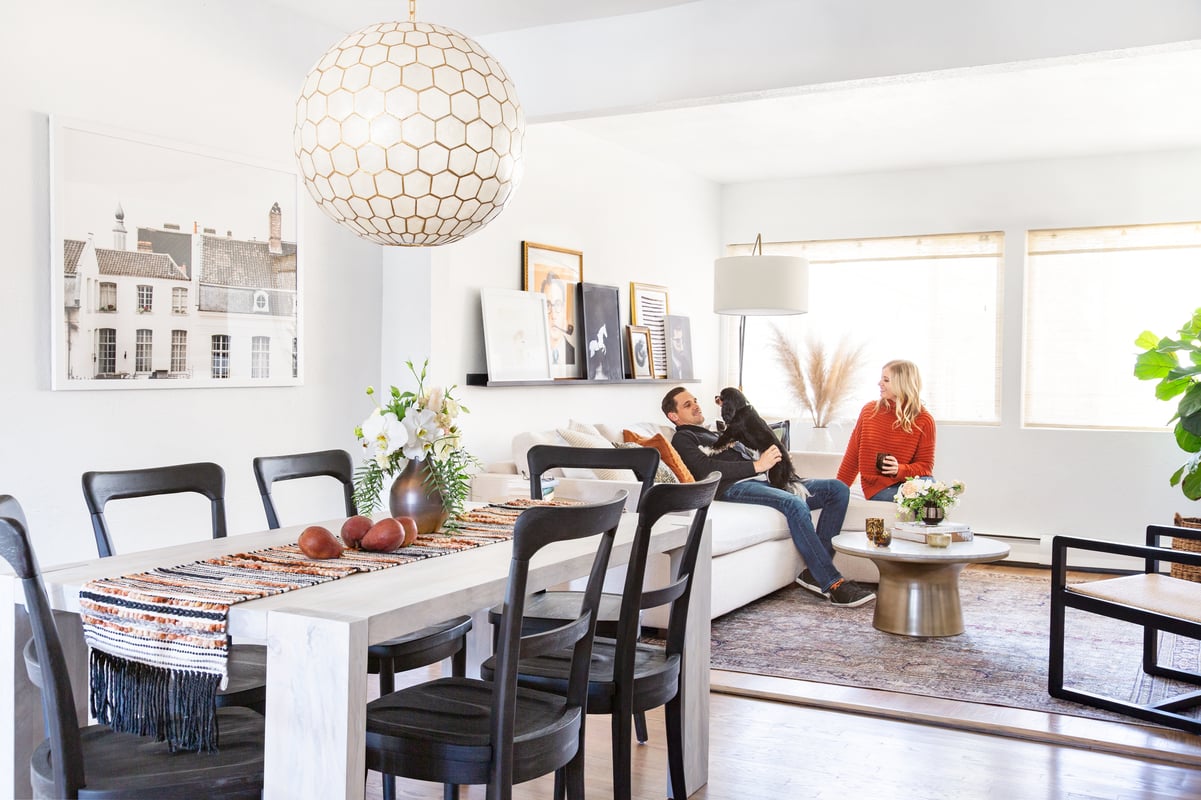Whether it’s a quick weekend makeover or a full-on reno, tackling a design project with a significant other can be challenging, to say the least. From deciding on a shared aesthetic to delegating tasks and staying on-budget, any couple is bound to clash at some point (read: argue for hours on end). How can you keep your budget, relationship, and sanity in-check when the inevitable snag arises? Or better yet, is it even worth attempting, or is this best left to the professionals?
Our take: these potential pitfalls are merely cloaked opportunities to get to know yourself, your partner, and your shared style better. Sure, intimidation and excitement may go hand-in-hand on this one, but think of it as a thinly-veiled exercise in compromise and communication. Plus, you’ll both love your home that much more if it complements both of your personalities.
As veterans in this so-called “field” (we’ve designed a space or two with partners and exes alike), we’re here to offer our advice. But before we get to the positive stuff, let us address the elephant in the room:
The Most Common Mistake: Design By Compromise
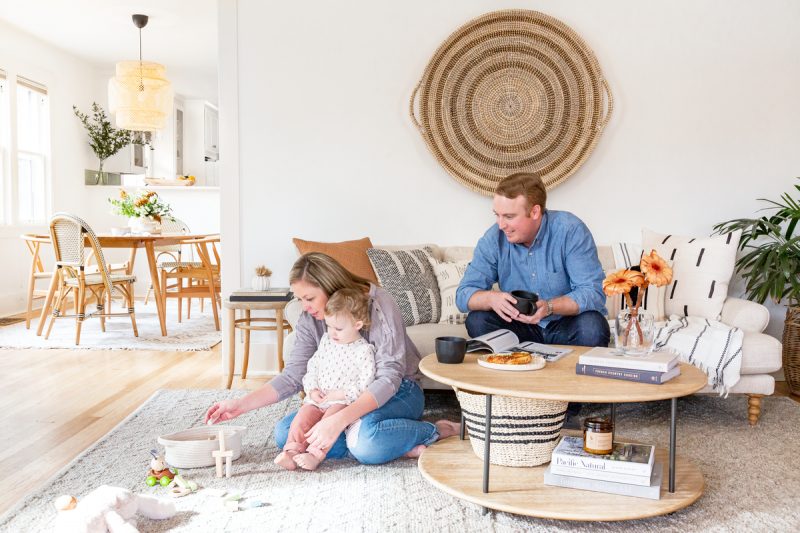
We see it all the time: a couples’ tastes are so opposite that, in a well-intentioned effort to compromise, the finished space feels as disjointed and fragmented as the design process itself. A couple that loves both modern and traditional design in equal measure, for example, ends up with a space that’s a 50-50 mix (and not in the chic Parisian way).
More often than not, these partners fall victim to the same fatal flaw: keeping score of who gets to choose what, and ultimately designing a space that merely checks both boxes. Instead, we recommend embracing your different styles in an intentional, thoughtful way. Here’s how:
- First and foremost, throw out the design rule book — differing styles and eras can most certainly complement one another! Sit down and pair seemingly opposite pieces together and see how it feels. Use tools like Canva, Photoshop, or a flesh-and-blood moodboard to visualize your look and play with unique combinations.
- If mixing feels like too much of an undertaking, consider a middle ground. If you love mid-century modern and your partner loves French provincial, for example, consider a unified aesthetic that marries the two (hello, art deco!).
- If all else fails, defer to unifying elements like color, texture, and material. For example, braided jutes, nubby wools, and unglazed ceramics all play in the same texture sandbox, leaving space for contrast in the style or era department.
Now that that’s been addressed, let’s move forward to the main event: our guide to designing a space with your S.O. without losing your s%@t.
Step 1: Set Some Ground Rules
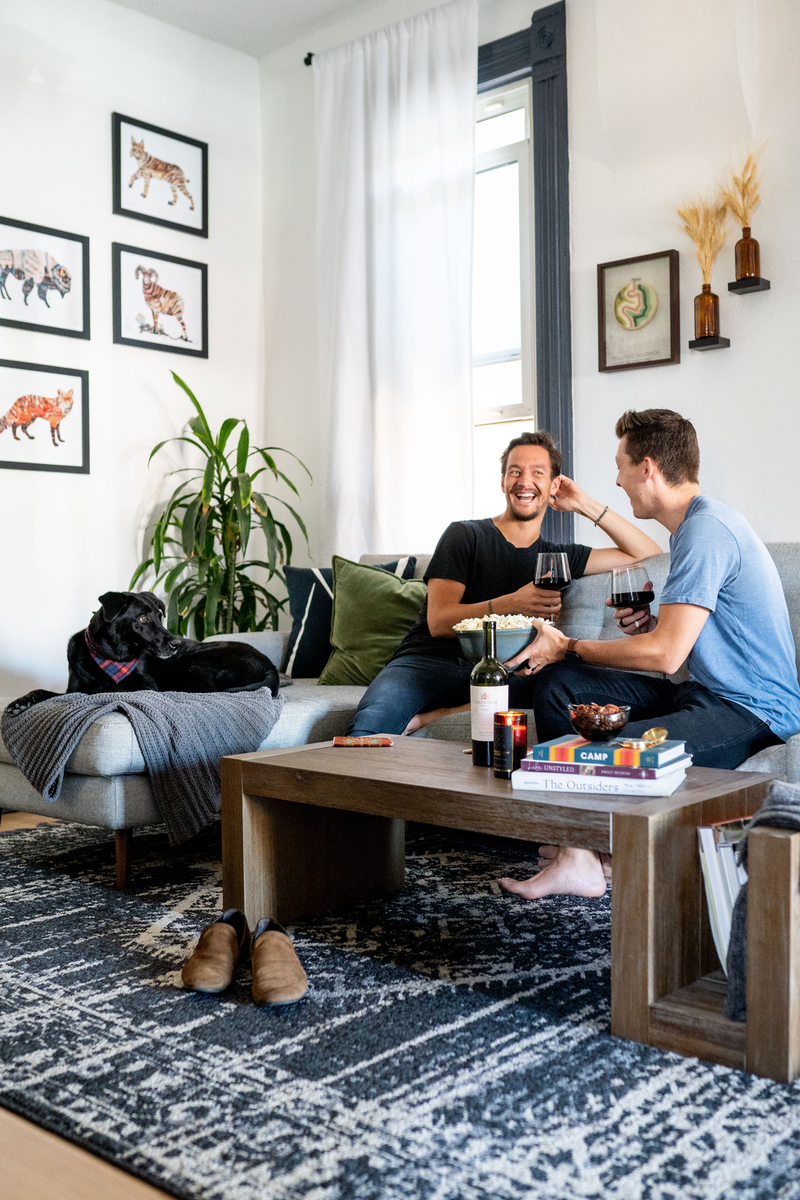
Before you overwhelm your partner with the “Dream Home” Pinterest board you’ve been curating since 2012, take a moment to set some ground rules. We recommend talking through the below line items:
- Budget. Deciding on a hard budget up-front will help you avoid countless arguments down the line. If you’re an Excel or Google Sheets couple, by all means — chart it out. That way, when you inevitably fall in love with a $3,000 marble dining table and your partner just doesn’t *get it*, you both have a living, breathing document to play referee.
- Goals: Next, discuss what you’re both looking for in the space. Consider your lifestyle, work schedules, hobbies, and beyond. In desperate need of a home office slash guest bedroom? Aiming for a cozy, relaxing living space with a large TV? Designing a yoga-slash-workout room with calming energy? Don’t worry if you want different things out of the same space — design is all about finding common ground.
- Must-have items: To avoid a mid-project stalemate over who gets what, agree on a few non-negotiable items for the space. Ideally, these are larger, defining pieces, like a deep sectional couch, a linen upholstered bed frame, or even a bold wallpaper or paint color. That way, you’ve already agreed on a general look and layout before you so much as touch a hammer.
Step 2: Find Your Shared Aesthetic
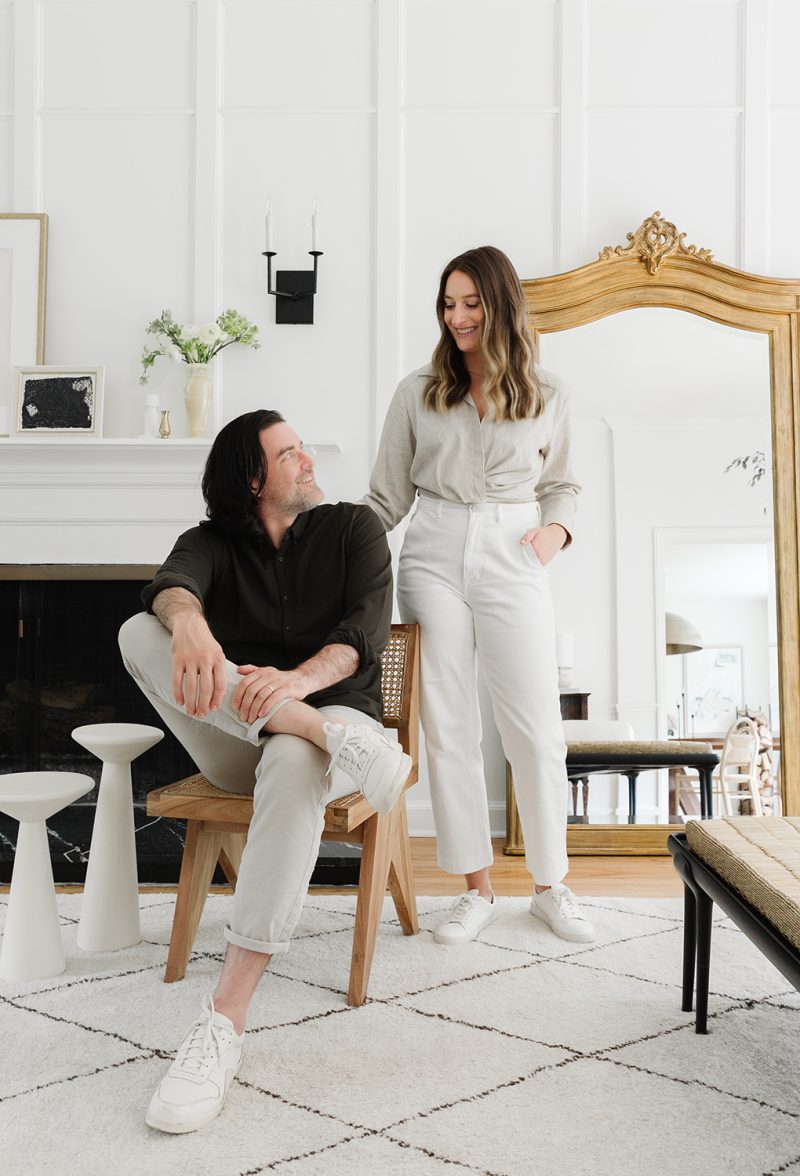
With the above boxes ticked, time for the fun part: designing your dream space. While it’s common for one partner to dominate this discussion (*raises hand*), we’re firm believers that everyone has preferences, regardless of design enthusiasm or experience.
First, the obvious: scour Pinterest or design magazines to see what catches your collective eye. Explain why you love or hate something, and give your partner the same courtesy. If you want, build a collaborative Pinterest board where you slowly build your shared aesthetic.
In addition to visual inspiration, consider the emotional — how do you both want this space to feel? What atmosphere or vibe are you after? How do you see yourselves using this space?
Step 3: Execute & Reflect
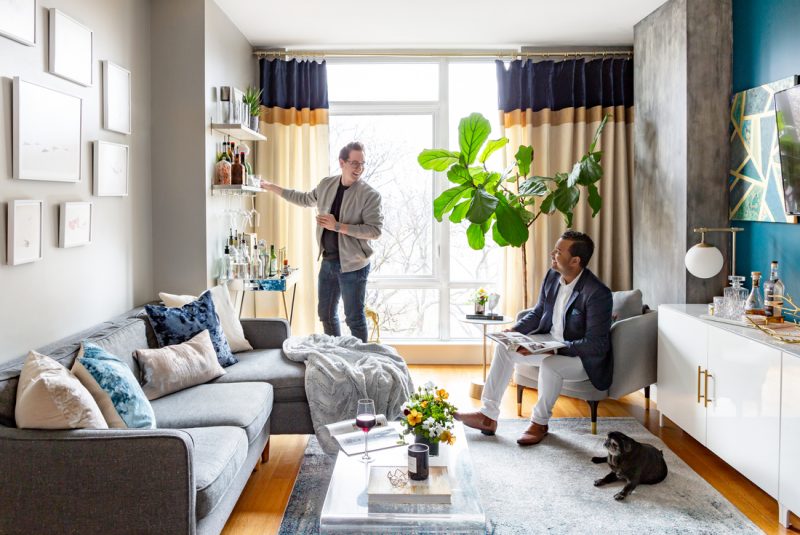
And now, time for the manual labor. Whether you’re taking a sledgehammer to walls or simply ordering new furniture, remember: your ground rules are your guideposts. If a disagreement arises (which let’s be honest, it will), defer to your agreed-upon design plan and budget. It’s impossible to avoid arguments entirely, but you can put resources in place to help you navigate these inevitable disagreements.
As your project unfolds, don’t forget to tally the costs, jot down sources (your friends will ask you about that paint color), and most importantly, pause and reflect on the progress you’ve made. After all, pulling off a DIY reno or two-hour design project with your house, relationship, and sanity still intact is a feat worth celebrating. Congratulations — you now have a design partner for life!
Need an expert tiebreaker to offer inspiration and maybe even a little design therapy? Take our Havenly style quiz (make it a fun date night!) to match with the perfect interior designer who can seamlessly marry your styles together.

